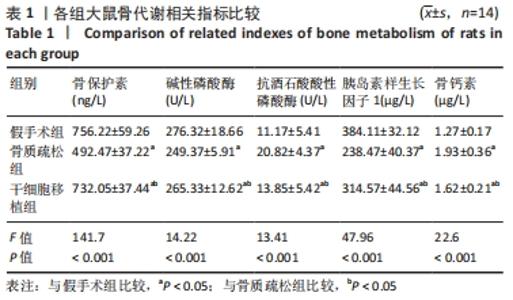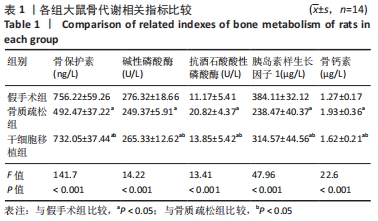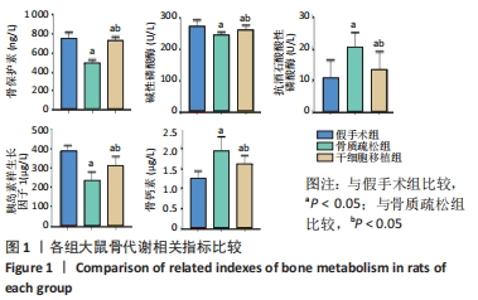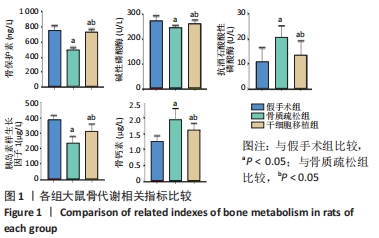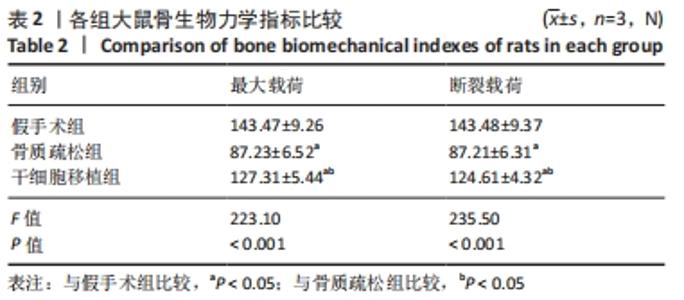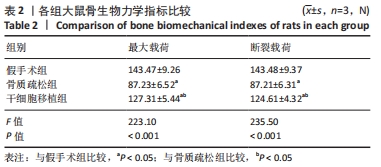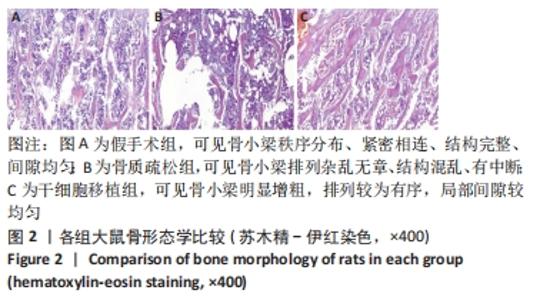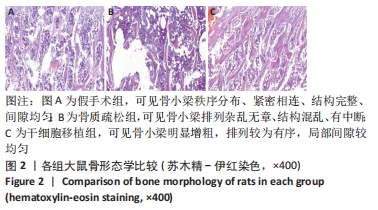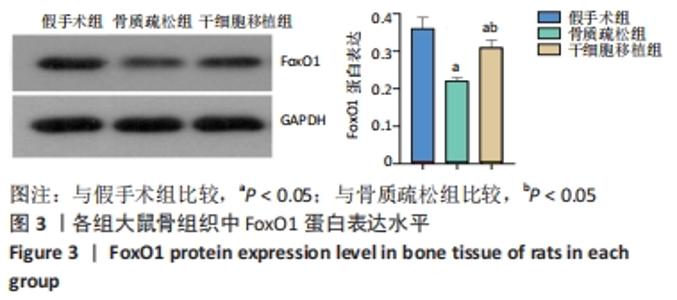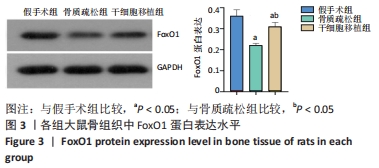[1] 周建烈,刘忠厚.补充钙和维生素D防治骨质疏松症的全球临床指南进展[J].中国骨质疏松杂志,2017,23(3):371-380.
[2] 袁真,闵珺,王恺,等.杜仲黄酮类3种药物成分治疗大鼠骨质疏松的比较研究[J].中国骨质疏松杂志,2018,24(2):244-248.
[3] CAI F, WU XT, XIE XH, et al. Evaluation of intervertebral disc regeneration with implantation of bone marrow mesenchymal stem cells (BMSCs) using quantitative T2 mapping: a study in rabbits. Int Orthop. 2015;39(1):149-159.
[4] 赵灵芝,赵柳,张小清,等.基于Fe(Ⅲ)和四甲基联苯胺显色反应分析碱性磷酸酶活力[J].分析试验室,2020,39(5):12-16.
[5] BOCK O, LOCH G, SCHADE U, et al. Osteosclerosis in advanced chronic idiopathic myelofibrosis is associated with endothelial overexpression of osteoprotegerin. Br J Haematol. 2005;130(1):76-82.
[6] 陈素领,周杰超,张杰,等.大黄素通过抑制FOXO1活性减轻NO对神经细胞的损伤[J].生物化学与生物物理进展,2016,43(11):1076-1085.
[7] DING C, YANG C, CAO Q, et al. Effect of mHCN2 gene modification on chronotropic relevant receptors in BMSCs co-cultured with atrial myocytes. Exp Ther Med. 2017;14(3):2108-2116.
[8] 李军,王云,鲍小明,等. rhBMP-2体外诱导骨质疏松大鼠BMSCs成骨及VEGF表达的研究[J].中国骨伤,2015,28(5):446-449.
[9] 乔松,许琦,叶子青,等.骨保护素对高龄骨质疏松症患者骨代谢的影响[J].解放军医学杂志,2015,40(6):472-474.
[10] 丁琦,邢桂红,秦晓丹,等.绝经后骨质疏松症患者血清β-CTX,Cathe K和OPG水平变化及其临床意义[J].山东医药,2020,60(22):35-38.
[11] 胡海岩,黄燕妮.正常妊娠妇女不同孕周血清ALP、AFU的变化及临床意义[J].海南医学,2016,27(20):3298-3300.
[12] LV Y, WANG G, XU W, et al. Tartrate-resistant acid phosphatase 5b is a marker of osteoclast number and volume in RAW 264.7 cells treated with receptor-activated nuclear κB ligand. Exp Ther Med. 2015;9(1):143-146.
[13] 卢建华,卢烨超,金红婷,等.红曲对去卵巢大鼠骨质疏松模型血清ALP,TRAP及骨组织TNF-α,RANK表达的影响[J].中国中医骨伤科杂志, 2017,25(9):5-8.
[14] 龚立刚,艾成思,王梦萍.miR-486-5p靶向FOXO1抑制结肠癌干细胞干性的初步研究[J].安徽医科大学学报,2020,55(4):528-533.
[15] 谭鹏.转录因子FOXO1对破骨细胞分化及功能影响的实验研究[D].武汉:华中科技大学,2017.
[16] KIM YS, NAM JS, YEO DW, et al. The effects of aerobic exercise training on serum osteocalcin, adipocytokines and insulin resistance on obese young males. Clin Endocrinol (Oxf). 2015;82(5):686-694.
[17] 覃裕,邱冰,朱思刚,等.唑来膦酸与阿仑膦酸钠治疗骨质疏松患者的疗效比较及对血清25-(OH)D,BALP,BGP的影响分析[J].中国骨质疏松杂志,2016,22(8):1035-1038.
[18] 杨渝勇,曹兴,邓淼,等.绝经后骨质疏松症病人骨髓间充质干细胞STIM1与成骨分化关键因子的表达变化[J].临床外科杂志,2019,27(4):65-68.
[19] 郝尧.健脾益肾法联合重组人生长激素治疗特发性矮小症的疗效及对血清IGF-1、IGFBP-3表达的影响[J].现代中西医结合杂志,2015,24(26): 2900-2902.
[20] 粟麟,李双蕾,陈文辉,等.壮骨方对糖尿病大鼠骨质疏松的防治及其对血清IGF-1、TNF-α水平的影响[J].中国骨质疏松杂志,2016,22(4):428-432.
|
